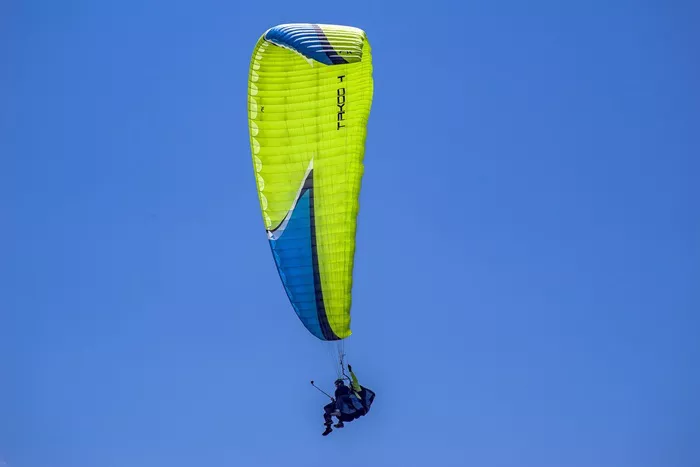Paragliding, often likened to floating on air, captures the essence of human flight like no other sport. It’s not just about the rush of wind in your face or the panoramic views below; it’s about the meticulous preparation and investment required to make each flight safe and exhilarating. Before embarking on this journey, understanding the financial commitments involved is crucial. From training and equipment to ongoing maintenance and safety gear, each component plays a pivotal role in ensuring your paragliding experience is as rewarding as it is thrilling. Join us as we explore in detail the costs associated with entering the world of paragliding, empowering you to make informed decisions and embark on this extraordinary adventure with confidence.
Training Costs
The first step into the exhilarating world of paragliding begins with comprehensive training. Professional lessons are essential for mastering fundamental techniques, safety protocols, and the essential flying skills needed for independent flights. Training costs typically range between $1,000 and $2,500, depending on the location and the duration of the program. These courses are designed to instill confidence and competence, ensuring new pilots can handle various conditions and navigate safely through the skies.
Paraglider Wing
Choosing the right paraglider wing is crucial for your safety and enjoyment in the air. The cost of a beginner-friendly wing varies based on factors such as model, size, and brand reputation. New wings suitable for newcomers generally range from $3,000 to $4,000. It’s important to select a wing that matches your skill level and flying aspirations, as this equipment not only affects your flight performance but also your overall comfort and maneuverability.
Harness
Your harness serves as your cockpit in the sky, providing comfort and safety during flight. Prices for harnesses can range significantly, from $500 to over $1,000, depending on features such as weight, comfort padding, and additional safety elements. Choosing a harness that fits well and is designed for paragliding ensures you can pilot your wing effectively and comfortably, enhancing your overall flying experience.
Reserve Parachute
Safety is paramount in paragliding, and a reserve parachute is your last line of defense in case of emergency. Prices typically range from $500 to $800, reflecting the quality and reliability needed for such critical equipment. Regular inspection and repacking are essential maintenance tasks to ensure the parachute functions properly when needed, providing peace of mind during flights.
Helmet
Protecting your head is non-negotiable in any aerial sport, and paragliding is no exception. A quality paragliding helmet can be purchased for approximately $100 to $300, offering essential protection against impacts while maintaining comfort and visibility. Ensuring your helmet meets safety standards and fits securely is vital for safe and enjoyable flights, allowing you to focus on the breathtaking views and the thrill of flying.
Weather Instruments
Understanding and monitoring weather conditions are essential for safe paragliding. Investing in weather instruments like an anemometer, GPS, variometer, and altimeter can range from $1,000 to $2,000. These tools provide crucial data on wind speed, direction, altitude, and atmospheric conditions, empowering pilots to make informed decisions before takeoff and during flight, enhancing safety and navigation capabilities.
Windsock
A windsock is a simple yet essential tool for assessing wind conditions before launching. Costing around $50, a windsock provides visual cues on wind direction and strength, helping pilots determine the safest times and directions for takeoff and landing. It’s a small investment that significantly contributes to the overall safety and precision of your paragliding experience.
Gloves and Clothing
Appropriate clothing and gloves are essential for comfort and protection during flights, especially in varying weather conditions. Costs typically range from $200 to $400, depending on the quality and specific needs for insulation, moisture-wicking properties, and wind resistance. Choosing clothing that allows for ease of movement and temperature regulation ensures pilots can focus on flying without distractions, enjoying every moment in the sky.
Miscellaneous Expenses
Beyond the initial equipment costs, additional expenses may include annual membership fees for paragliding clubs or associations. These memberships often provide access to training resources, flight sites, and a supportive community of fellow enthusiasts. Ongoing maintenance costs for gear, including regular inspections, repairs, and replacements, should also be factored into your budget to ensure your equipment remains in optimal condition for safe and enjoyable flights.
Total Cost Overview
The total investment to start paragliding, encompassing training and essential equipment, typically ranges from $4,000 to $7,000 or more. Factors influencing costs include geographical location, personal equipment preferences, and whether you opt for new or quality-checked used gear. While initial expenses may seem significant, the unparalleled experience of soaring through the skies makes paragliding a deeply rewarding pursuit for those captivated by adventure and exploration. Ongoing budgeting for maintenance and club memberships ensures a safe and fulfilling journey into the world of free flight.
Related topics:

